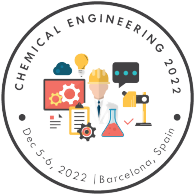Chemical Applications in Producing Oil and Gas
Petroleum Chemistry is made of a mixture of different hydrocarbons. The most prolific hydrocarbons found in the chemistry of petroleum are alkanes; these also sometimes known as branched or linear hydrocarbons. A significant percentage of the remaining chemical compound is the made up of aromatic hydrocarbons and cycloalkanes. Additionally, petroleum chemistry contains several more complex hydrocarbons such as asphaltenes. Each geographical location and hence oil field will produce a raw petroleum with a different combination of molecules depending upon the overall percentage of each hydrocarbon it contains; this directly affects the coloration and viscosity of the petroleum chemistry. The primary form of hydrocarbons in the chemistry of petroleum is the alkanes, which are also often named paraffin’s. These are termed saturated hydrocarbons and the exhibit either branched or straight molecule chains.
The market size of composites in oil & gas industry is projected to reach USD 1.98 Billion by 2021, at a CAGR of 5.05% between 2016 and 2021. The increasing demand for non-corrosive and lightweight materials in the oil & gas industry and low maintenance cost of composites are the key drivers of the global market of composites in oil & gas industry.
- Enhanced oil recovery
- Fracturing fluids
- Oilfield chemistry
- Chemicals used in oil and gas production
- Nano-technologies used in oil and gas production
Related Conference of Chemical Applications in Producing Oil and Gas
Chemical Applications in Producing Oil and Gas Conference Speakers
Recommended Sessions
- Chemical Applications in Producing Oil and Gas
- Coal and Natural Gas
- Fluid Mechanics
- Mass transfer as separation processes
- Modelling simulation and optimization
- Polymer Technology
- Process Heat Transfer
- Water Technology & Innovations
- Advances in Renewable Chemicals
- Biochemical Engineering
- Catalysis Engineering
- Chemical Engineering
- Chemical Reaction Engineering
- Crystallization
- Electrochemistry and Electrochemical Engineering
- Environmental and sustainable chemical engineering
- Environmental Engineering
- Health, Safety, and Environment
- Material Sciences
- Petroleum Engineering
- Recent advances in Petrochemistry
- Separation Techniques
- Thermodynamic Process
- Transport Phenomenon
Related Journals
Are you interested in
- 3D Printing in Microfluidics - Microfluidics 2026 (Germany)
- AI & Automation in Microfluidic Systems - Microfluidics 2026 (Germany)
- Biomedical Microfluidic Applications - Microfluidics 2026 (Germany)
- Clinical Translation & Commercialization - Microfluidics 2026 (Germany)
- Droplet-Based Microfluidics - Microfluidics 2026 (Germany)
- Lab-on-a-Chip Innovations - Microfluidics 2026 (Germany)
- Microfabrication & Soft Lithography - Microfluidics 2026 (Germany)
- Microfluidic Biosensors & Diagnostics - Microfluidics 2026 (Germany)
- Microfluidic Cell Culture Platforms - Microfluidics 2026 (Germany)
- Microfluidics for Drug Delivery - Microfluidics 2026 (Germany)
- Microreactors & Chemical Processing - Microfluidics 2026 (Germany)
- Nanofluidics & Molecular Transport - Microfluidics 2026 (Germany)
- Organ-on-Chip Engineering - Microfluidics 2026 (Germany)
- Point-of-Care Microdevices - Microfluidics 2026 (Germany)
- Single-Cell Microfluidic Analysis - Microfluidics 2026 (Germany)

